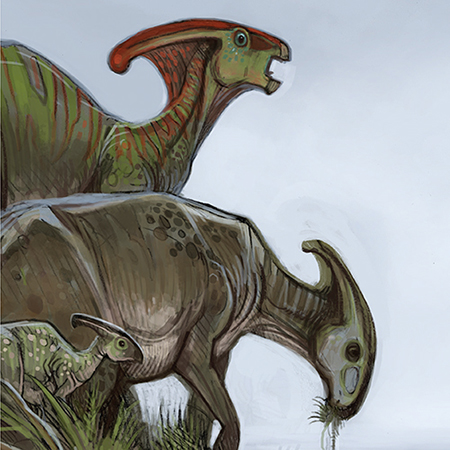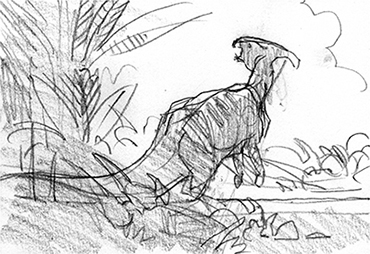
Make way for hadrosaurlings! The parasaurolophus is understood to have been a social species. Playing upon the nickname of the duck-billed dinosaur, I imagined a scene reminiscent of modern-day ducks. I decided to focus my design on a single family group with the adult parents leading a string of hatchlings to the waterfront to feed. The father honking into the fog to locate any other parasaurolophus nearby.


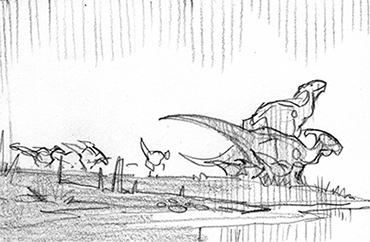

Sketch the initial drawing using your concept sketches and reference for details. Here the father and mother lead by example as they show their young how to get a drink at the riverbank.
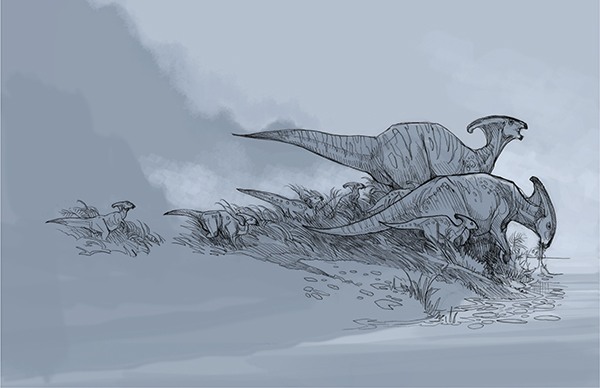
Import the pencil sketch into the computer using a flatbed scanner. Open a new Multiply mode layer over the sketch. This will allow you to paint directly over the sketch without obliterating the drawing.

Begin blocking in large areas of local color such as the beach, sky and water. A low value grayscale palette is ideal for the foggy background.
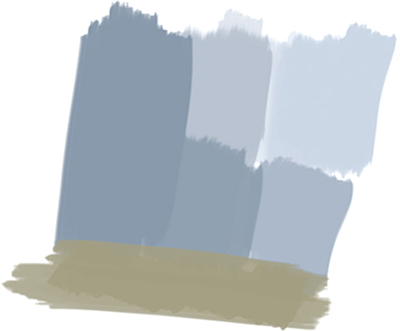
Color Palette
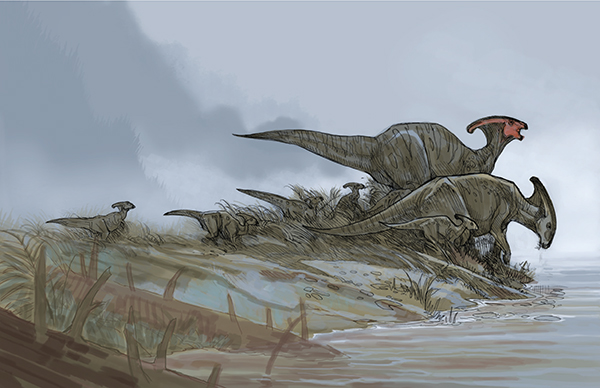
Refine the riverbank and block in the base colors of the parasaurolophus. The central focal area will be the two adult dinos and the baby at the water’s edge.
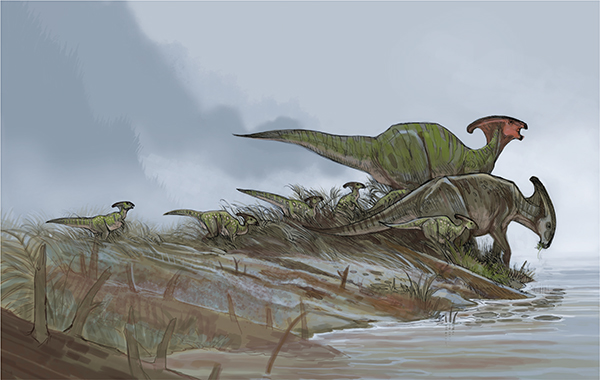
Establish some unique markings on the individual dinosaurs. The male is brightly colored with green stripes and has a red face. The female is colored in mottled camouflage while the hatchlings are a spotted camouflage like baby fawns. Render these elements in a new 100% opaque Normal Mode layer.
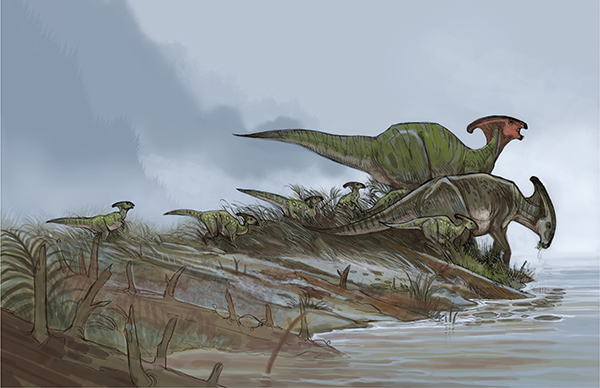
Continue building the highlights of the sandy bank and sketch a bale of turtles sitting on a log in the foreground.
The lambeosaurus (“Lamb’s Lizard”) is another duck-billed hadrosaur closely related to the parasaurolophus. Its large head crest is said to resemble a hatchet that improves its sense of smell.
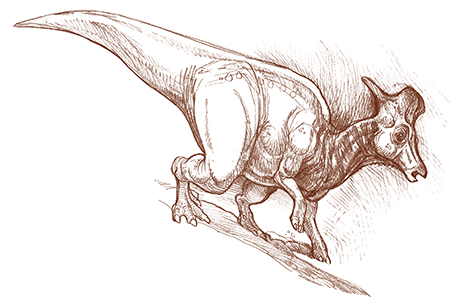
Lambeosaurus lambei
Length 40 feet (12m)
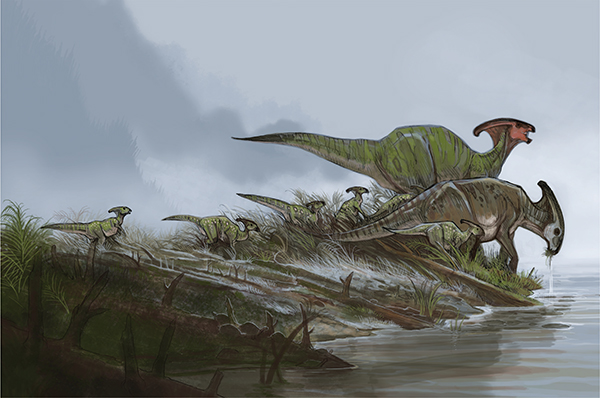
Once the colors and elements have all been established it is time to start focusing on some of the finer nuances of the image. Moss and ferns blanketing the water’s edge along with rotted bark and markings on the turtles add texture to the scene. At this point in the late Cretaceous, early grasses and seabirds would be evolving in the dinosaurs’ environment.
Begin by sketching the skeletal structure starting with the shape of the spine. Building off this foundation, add the anatomy of muscles followed by textural details like skin and markings.
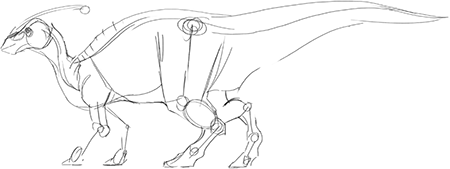
1
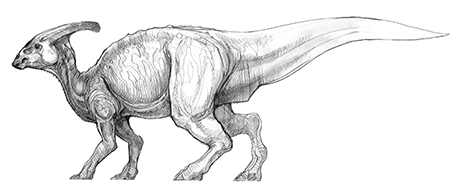
2
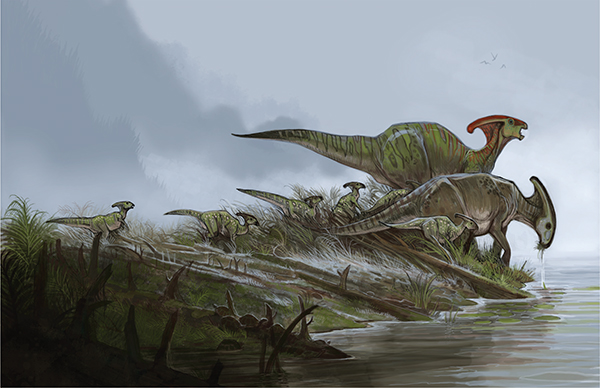
Refine the foreground details to add depth and scale to the painting. Use small detail brushes to add fern fronds, bark texture and highlights on the surface of the water.
